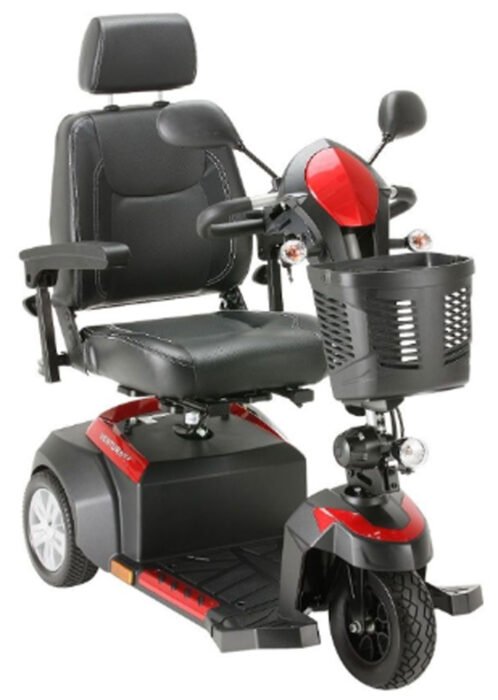
Cityscapes are transforming at a pace never seen before.
We are witnessing cities being built, population rising, and endless traffic congestion. Once heralded as dependable, traditional methods of transportation are now causing delays, pollution, and inefficiency. The increasing demands on infrastructure have necessitated the exploration of alternative, both practical and sustainable, technologies.
Smart mobility policies, improved public transportation, and the encouragement of micro-mobility solutions are among the ways governments and city planners are responding to these challenges. At the forefront of these developments are compact electric vehicles, which are proving far more effective at providing the mobility required where cars and buses have fallen short.
As more people seek to reduce their commuting time, lower their costs, and adopt a more environmentally friendly approach, electric transportation solutions are gaining traction. Bicycles and two-wheelers already rule some parts of the world, but many of us do not feel comfortable or safe on them.
Enter the three-wheeled electric scooter. This is where three-wheeler electric scooters come into play, offering a mix of comfort, safety, and convenience. They are reimagining the way people get around in today’s cities, bridging the gap between big vehicles and wobbly two-wheelers.
That said, let’s discuss why 3-wheel electric scooters are the future of urban mobility.
- Enhanced Accessibility and Stability
Accessibility is a key factor in considering mobility options. A 3 wheel electric scooter ensures stability without sacrificing agility.
In contrast to the two-wheel models, the third wheel helps keep the weight evenly distributed, thereby preventing the vehicle from tipping. This makes them particularly attractive to older adults and users with mobility issues.
The platform is overall wider and has a lower center of gravity for improved control. Riders feel more secure and stable in turns and when traveling through tight passages (hallways, streets, etc.).
This access enables the benefits of electric mobility to reach communities that traditional designs have often overlooked. That also means more residents can engage in sustainable commuting without fear of personal safety.

- Space Efficiency in Dense Cities
Urban spaces are notoriously tight. There is limited parking, the streets are narrow, and the population density continues to increase. Large vehicles, on the other hand, don’t meet the increasingly dynamic requirements of these places.
The three-wheel design is compact, so you have less to store and take up less space. In many crowded neighborhoods, a single car space can hold multiple scooters, which testifies to their efficiency.
The smaller size makes for easier navigating down tight alleys, side streets, and jam-packed avenues. Such adaptability means they can serve as personal transportation as well as part of a delivery vehicle fleet, or as part of a city-wide shared mobility service.
- Lower Environmental Impact
Cities are under increasing pressure to reduce emissions and improve air quality. Three-wheeled electric scooters can address these problems directly, as they are powered by electricity. They produce no damaging exhaust emissions, drastically reducing the carbon footprint of short urban journeys.
Moreover, they use less power for a full charge than one of your household appliances would for a full day of operation, making them one of the most energy-efficient forms of transportation on the market.
In addition, batteries are improving, extending ranges while reducing charging times, and other e-scooter factors are keeping them within the realm of viable options for daily commutes.
- Cost-Effective Urban Commuting
Cost is often the primary motivation for adopting new modes of transportation. Three-wheel electric scooters offer far more affordable transportation than cars or motorcycles.
The cost of acquisition is typically lower, and maintenance costs tend to be lower as well. Without the complications of engines, transmissions, or fuel systems, the chances of mechanical malfunctions are almost zero.
Energy is also a fraction of what conventional vehicles require. Powered commuters charging at home or using public charging stations have a modest expense structure, thus, acceptable and manageable costs.
Insurance requirements are also generally lower, and that’s appealing to students, young professionals, and budget-minded commuters in particular.
- Versatility Across Urban Needs
Although commuters are a common sighting, they can be so much more. 3-wheel scooters are portable enough to fit in the trunk of your car.
They are ideal for delivery services, as they can navigate quickly through heavy traffic with light loads. The tourism industry uses them for guided city tours, which can be a safe but fun way for visitors to navigate through.

Even in households where they’re not personal vehicles, they become shared vehicles, suitable for errands, the grocery store, or commuting to work. Their construction is such that they can fill several different roles without requiring specific modification. By acting in dual roles that span multiple industries, they integrate more deeply into the urban mobility landscape.
- Future-Proofing Urban Transport
Urban transportation continues to evolve with technological advances. Three-wheeled electric scooters are the ideal tool and means of transport for various reasons. Their efficiency and accessibility will continue to improve as battery technology advances, materials become lighter, and they can better integrate renewable energy.
Cities that implement them early aren’t just addressing today’s mobility problems; they are also doing so for tomorrow. By integrating scooters into their systems and building for the future, they are securing a cleaner environment, less congested streets, and transport systems that are inclusive to all.
- Every Day Safety and Comfort
The safety factor, an important aspect in every means of transportation, is guaranteed within three-wheel scooters. Due to their inherent stability, they have lower chances of being involved in accidents, which are very common in 2-wheelers. Some models boast high-performance braking and grippy tires, while others have ergonomic seating to provide comfortable cushioning during longer rides.
Riders also have better body positioning, which translates to less fatigue on longer rides. Their comfort appeals to people who might have previously steered clear of small electric cars due to concerns about body strain.
- Integration with Smart Mobility Systems

Digital infrastructure for better transportation management is becoming a growing challenge for modern cities. Three-wheel electric scooters are working effectively with many such projects.
Nowadays, many models come with IoT connectivity, GPS navigation, and mobile app support. Users can monitor the battery’s state, performance, or even locate charging stations through their smartphone.
Conclusion
The old ways of moving people around will no longer suffice as technology advances, and cities need to start embracing environmentally and human-friendly alternatives. This is where three-wheel electric scooters can offer a perfect solution, as they provide a blend of stability, economy, safety, and ease of use, all in an easy-to-manage ride.
They cater to individual needs while also meeting broader environmental and infrastructural objectives. As city populations increase and sustainability pressures rise, this case becomes increasingly compelling for three-wheel scooters.
They aren’t merely a convenience; they are an essential development in urban transportation. The balance they strike with accessibility, breakthrough, and future-readiness makes them the basis of the next wave of urban mobility.
